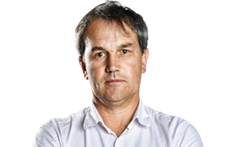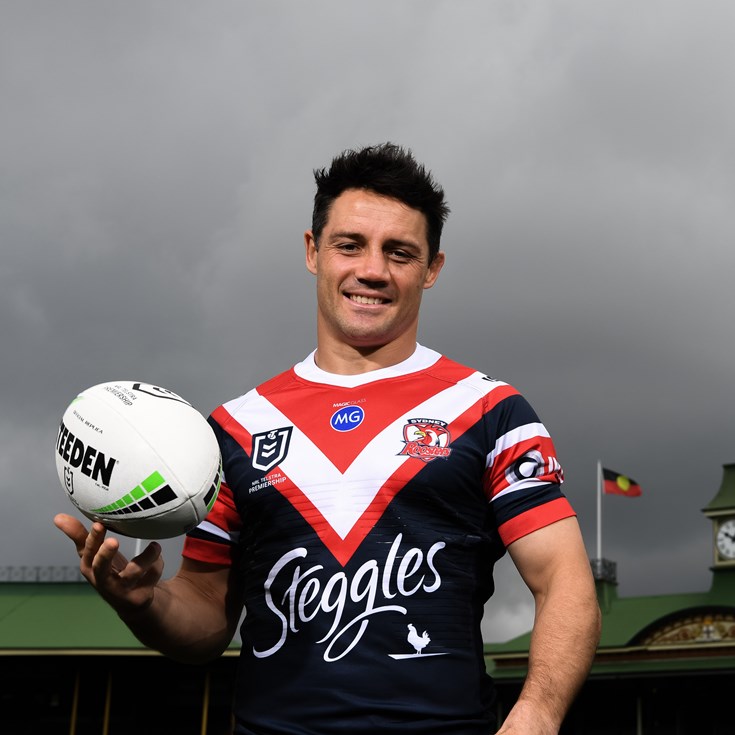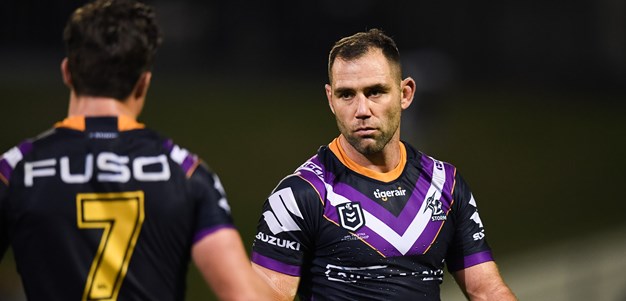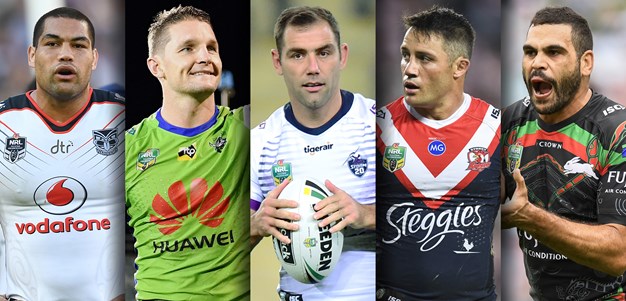
When Melbourne coach Craig Bellamy went on his annual off-season pilgrimage to learn from other successful sporting organisations in the United States at the end of last year, those he visited all had one thing in common.
"Every place had a back-to-back title in their resume at some stage," Storm founder John Ribot said.
Melbourne captain Cameron Smith insisted ahead of Sunday's grand final against Sydney Roosters that the chance to become the first team to win back-to-back premierships in 25 years had only been mentioned briefly before the season started but the anecdote demonstrates why the Storm are the NRL’s benchmark club.
After building membership numbers from 15,000 to 25,000 in the past three years, the Storm are preparing to release an updated strategic plan with an AFL-like target of 50,000 members by 2024.
"That would make us one of the largest, if not the largest, rugby league or rugby union club in the world," Melbourne CEO Dave Donaghy said.
Few would have believed a Melbourne-based NRL team could dare to be so ambitious when the Storm was established in 1998.
Victorian premier Jeff Kennett had even warned Ribot: "Don't bring down a bum football team."
Ribot assured Kennett that was not the intention of himself or News Corp, who bankrolled the Storm for the first 15 years of the club's existence.
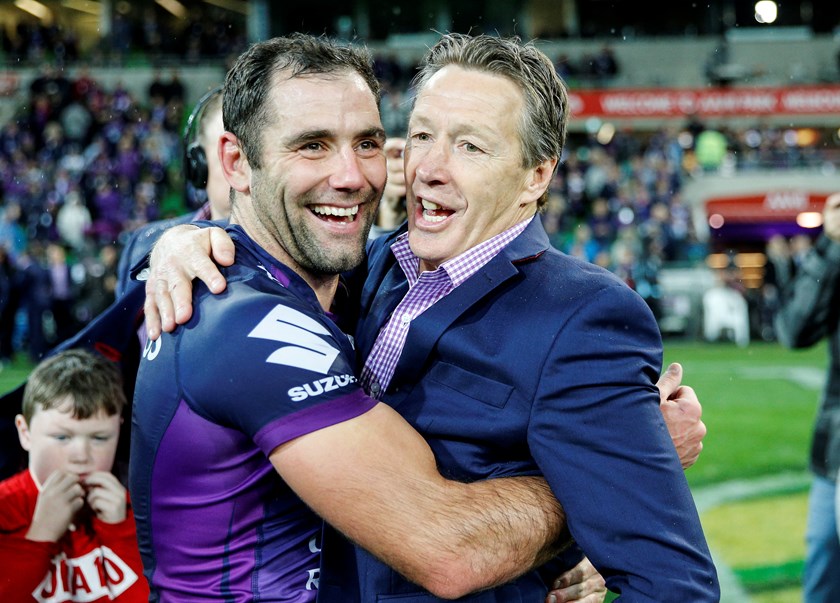
"This state will embrace any successful sporting team but if they don't win there is too much competition and it will be too hard for you," Kennett said.
SOUTHERN EXPANSION
With Australia's second largest population, Melbourne had long been considered an ideal city for the game to expand following the introduction of the Brisbane Broncos, Newcastle Knights and Gold Coast Giants in 1988.
After testing the waters by taking a State of Origin match to Olympic Park in 1990, officials decided to play a game at the MCG during the 1994 series and 87,161 fans turned up to watch NSW shutout Queensland 14-0.
Perth was preferred to Melbourne in 1995 when the Warriors, Cowboys and Brisbane-based Crushers also joined an expanded 20-team competition but former ARL chief executive John Quayle revealed that Sydney clubs were being encouraged to move south before the Super League war.
"The next stage for us didn't happen but it was certainly on the radar and the decision then was to stay at the 20 teams but to eliminate or amalgamate or relocate Sydney teams," Quayle said.
"We thought at the time we would be better off relocating and trying to convince a Sydney team to take the market, as the AFL had done with the Swans and in Brisbane, so we were talking to a number of the clubs at the stage because we knew that in their positions in Sydney they would struggle.
"But no one was prepared to do that at the time and then after Super League they eliminated Perth, and some other clubs, and went to Melbourne so you automatically had the players to go there but you also had $10 million per year from News Ltd."
Match: Roosters v Storm
Grand Final -
home Team
Roosters
1st Position
away Team
Storm
2nd Position
Venue: Accor Stadium, Sydney
BEST OF THE BRONCOS AND BULLDOGS
With the appointment of Chris Anderson as Melbourne's inaugural coach, the Storm's culture was drawn from the Broncos and Bulldogs – arguably the game's two leading clubs at the time and rivals in the first NRL grand final in 1998.
Anderson had coached Canterbury to the 1995 premiership and was the son-in-law of Bulldogs patriarch Peter 'Bullfrog' Moore, while Ribot and the Storm's founding CEO Chris Johns had come from Brisbane.
"I knew from the first time I met Chris that he was the right person," Johns said.
"He said 'this isn't about money for me, this is about being a pioneer. I want to go to foreign territory in Melbourne and set up something for rugby league'.
"One of the key principles we adapted from the Broncos was that you can't build it with a cheque book. We decided that we wouldn't get in a bidding war for any player. We're not going to be paying them the highest amount of money, we have got to sell them the dream.
"We have got to unite them so that everyone has got a common cause and they want to come here and be the next Broncos of the league. The number one rule was that everyone coming here was coming because they wanted to do something special and not because we had the biggest cheque book."
EARLY SUCCESS
Winning a premiership in just their second season put the Storm on the map but it also had its setbacks and meant the club had to stand on its own two feet sooner than they would have if Melbourne hadn't won the 1999 grand final.
Ribot recalled AFL legend Leigh Matthews, who was coaching Brisbane Lions at the time, telling him that success so early may make life more difficult for the Storm.
"Leigh said 'you have been here two years and you've won something so you are not going to get any favours from the other clubs'," Ribot said.
"To a point he was right."
Johns said that the Storm had been among the biggest earning clubs in the Telstra Premiership for sponsorship deals and gate receipts, but the NRL's decision to force Melbourne to include relocation costs in their salary cap after protests from rival clubs shifted their focus firmly towards development.
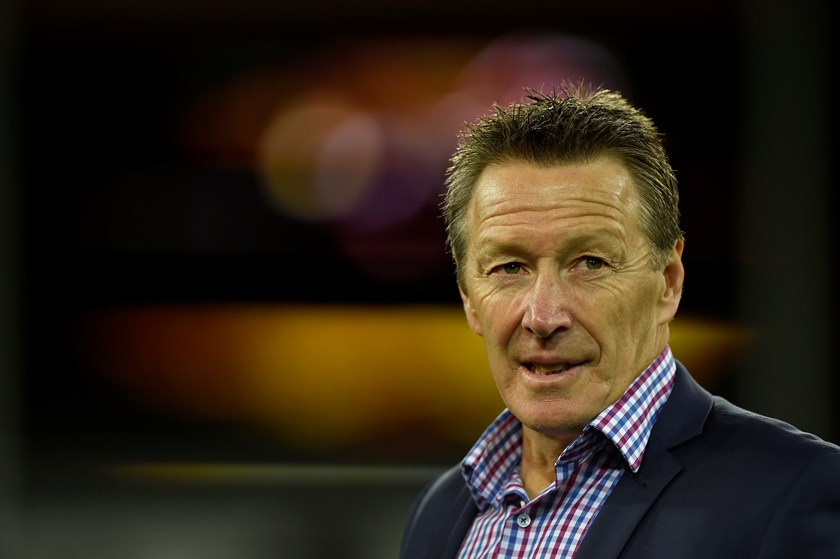
"That is why the Broncos have been so successful for so long. They have never gone out and bought players, they have developed well and they have been able to keep them," Johns said.
"To get young players like Billy Slater, Cooper Cronk and Cameron Smith and unite them at the Storm was so important.
"One of the proudest things I ever heard anyone mention about the Storm was [former West Coast, Collingwood and Carlton coach] Mick Malthouse after he addressed the team a few years ago.
"He came out and said 'that is the most unique culture I have seen'. With Billy, Cameron and Cooper leading the way, all of those kids have got a real sense of club and care about the club."
THE BELLAMY INFLUENCE
As Melbourne prepare for their eighth grand final under Bellamy against the Roosters on Sunday, there can be no doubt that his appointment as coach in 2003 has taken the Storm from a very good club to a great one.
Those who know him best talk about Bellamy's incredible work ethic, his passion for the Storm and the lengths he goes to ensure the players have the best possible preparation for every match and an insistence on having only people who fit in with the culture and values of the club.
"Craig calls it crudely a 'no dickhead policy' but it's just about having genuinely good people," Ribot said.
"Craig is just such an unselfish coach, he cares about his players and he cares about his staff.
"He sets the benchmark for everybody and they know if they want to play in this space they have got to do it under his rules, and if you do it the right way you can have an amazing journey and be very successful.
"We've had a few ordinary players come into the place but they don't last long. They get the message very quick. It is all about collectively getting the job done, and you get people who want to contribute for their mates - not themselves.
"Craig is very thorough, his knowledge base just keeps growing, he is always challenging himself and he challenges his team. There is a good vibe in the place and they enjoy each other's company."
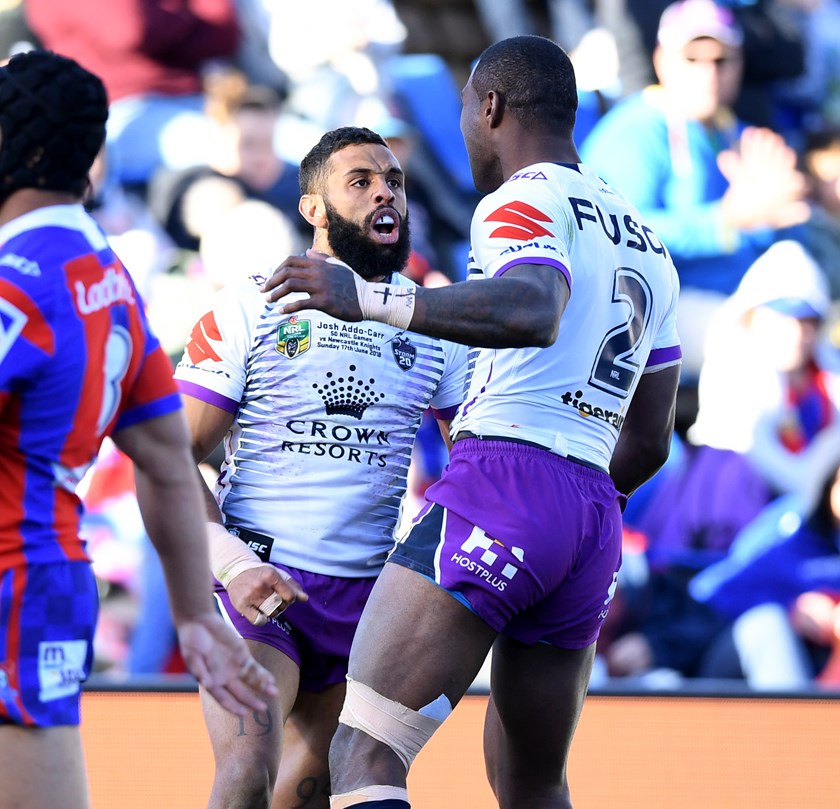
THE FUTURE
Regardless of whether the Storm win Sunday's grand final, the club aims to remain a benchmark for other Australian sporting clubs after Slater retires and beyond Smith's career or even the end of Bellamy's tenure as coach.
"We want to benchmark ourselves against the All Blacks, we want to benchmark ourselves against the likes of New England Patriots," Donaghy said.
"We will never have the scale of those organisations but what we can do is challenge ourselves to work as hard and be as successful as those organisations.
"The one thing that Melbourne Storm does is unite Melbourne. We encourage people to have their AFL team but equally we want them to have their rugby league team and if you are in Melbourne we would like that to be the Storm.
"I believe we have got the largest audience of any professional sports franchise in Melbourne. Likewise, I am led to believe we have got the largest television audience of any sports team in Melbourne.
"Pleasingly in the last three years we have gone from 15,000 members to 25,000 members. We have got an ambitious updated strategic plan which will see us set a target of 50,000 members in five years.
"You have always got to progress, you have got to continue to evolve, you have got to take what you have got and challenge yourself to be better."
